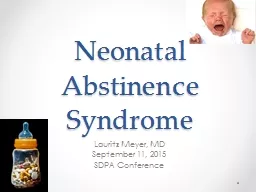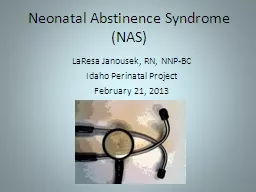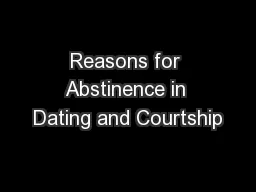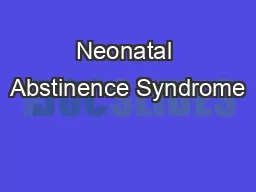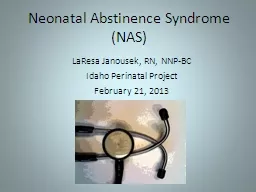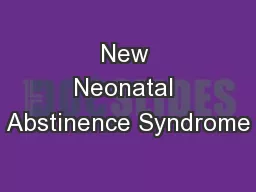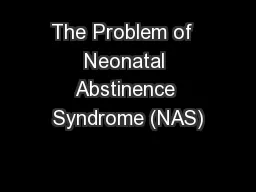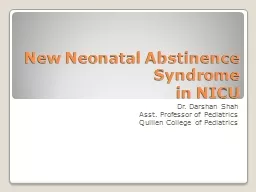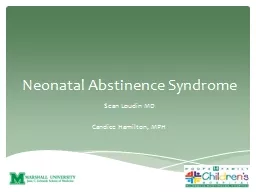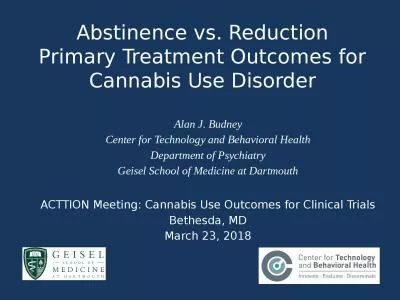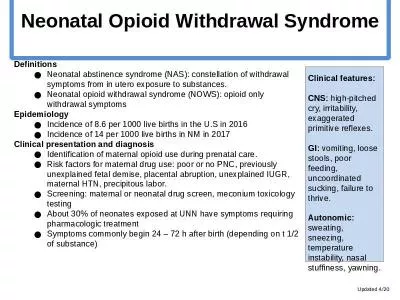PPT-Neonatal Abstinence Syndrome
Author : yoshiko-marsland | Published Date : 2019-11-23
Neonatal Abstinence Syndrome Lauritz Meyer MD September 11 2015 SDPA Conference Disclosure I have no financial relationships to disclose Objectives Describe the
Presentation Embed Code
Download Presentation
Download Presentation The PPT/PDF document "Neonatal Abstinence Syndrome" is the property of its rightful owner. Permission is granted to download and print the materials on this website for personal, non-commercial use only, and to display it on your personal computer provided you do not modify the materials and that you retain all copyright notices contained in the materials. By downloading content from our website, you accept the terms of this agreement.
Neonatal Abstinence Syndrome: Transcript
Download Rules Of Document
"Neonatal Abstinence Syndrome"The content belongs to its owner. You may download and print it for personal use, without modification, and keep all copyright notices. By downloading, you agree to these terms.
Related Documents

